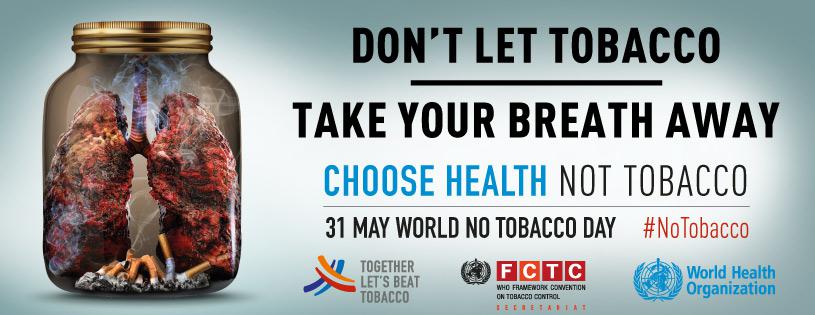
WHO launches reports on novel tobacco products to help bridge gap between science and policy
WHO is publishing 3 reports to inform countries on the current state of scientific knowledge, and regulatory and policy options available on novel tobacco products such as electronic nicotine delivery systems (ENDS), electronic non-nicotine delivery systems (ENNDS) and heated tobacco products (HTPs).
World No Tobacco Day 2020: protecting young people
The publication of these briefs coincides with World No Tobacco Day 2020 on 31 May, and is particularly timely. This year’s theme is “protecting youth from industry manipulation and preventing them from nicotine and tobacco use”, and it poses important questions on how the public health community can protect youth from novel products. The tobacco industry has identified young people as part of a fast-developing market to increase sales and recruit new users. Therefore, these products are relentlessly marketed to children and young people in a wide variety of ways.
Urgent need to regulate novel tobacco products in the Region
World No Tobacco Day and the release of the 3 publications are opportunities to reiterate the call for action to regulate novel tobacco products for the sake of public health in the WHO European Region. The Region is already seeing a spike in prevalence of these products among 13–15-year-old children in several countries, with evidence suggesting their use is higher among young people than adults.
ENDS and ENNDS, commonly known as e-cigarettes, are available in over 100 countries. Collectively they are referred to as EN&NNDS. Alongside HTPs, which can be bought in about 40 countries, they comprise the new group of products developed by the tobacco industry to expand their markets. While the latter is considered a tobacco product, EN&NNDS do not contain tobacco, and may or may not contain nicotine. Nonetheless, there is clear evidence that both types of products are harmful to health and undoubtedly unsafe.
HTPs expose users to toxic emissions similar to those found in cigarette smoke, many of which can cause cancer, while ENDS on their own are associated with increased risk of cardiovascular diseases and lung disorders and adverse effects on the development of the fetus during pregnancy.
Because of the damaging and addictive nature of these products, regulation is crucial to protect populations, particularly youth, who are a key target group for novel product advertising and marketing. ENDS are currently banned outright in 30 countries, whereas HTPs are banned in about 5 countries. Approaches to other forms of regulation vary, and in some countries these products are available with absolutely no regulation whatsoever.
Informed policy-making
In the ever-evolving debates around novel products, knowledge and regulation are the first steps towards a legislative framework for novel products that protects health and well-being. The 3 publications support countries by providing background information and key resources to inform their policy.
“Heated tobacco products: a brief” and “Electronic nicotine and non-nicotine delivery systems: a brief” provide background information on these products, supplying policy-makers and public health advocates with available information on their contents and health effects, and WHO’s current position on their regulation.
The publications also include country case studies on electronic nicotine and non-nicotine delivery systems regulation to share the range of regulatory practices found in Brazil, Canada, the Republic of Korea and the United Kingdom.